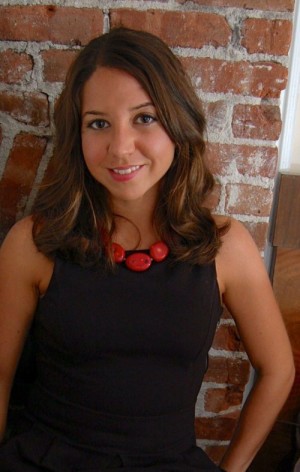Digital Scholar
Amanda Licastro, MAE ’08, teases out insights from student course blogs, online academic genealogies, and Twitter.
BY HANA YOO
Amanda Licastro has more than 1,000 Twitter followers. One week, she recalls, her tweets garnered more than 29,000 views. Generally, her Twitter account averages a couple thousand views per week.
“I joke that I got into the graduate center through Twitter,” says Licastro, MAE ’08, currently a PhD student in English at CUNY Graduate Center and an instructional technology fellow at Macaulay Honors College. As a prospective graduate student, Licastro started following academics on Twitter and setting up meetings over social media. She still uses Twitter to network, build her academic platform, and both gather and dispense information. “It’s about sharing and being collegial,” she says. “A lot of us share our syllabi and assignments and give each other feedback.”
At one point, Licastro became very interested in an obscure topic, object-oriented ontology (OOO). She turned to Twitter for help. People pointed her to podcasts, articles, and other resources. “It makes your teaching and scholarship so much stronger to have this community of people from all over the world,” she says. “I wouldn’t be able to do it without the social network. I wouldn’t have access to these conversations without it.”
Digital Humanities Maven
Licastro’s dissertation examines 3,000 course blogs collected over a decade at CUNY’s Macaulay Honors program. Licastro analyzes the ways students write on these 3,000 WordPress sites, paying attention to data such as the frequency and length of their posts, their citations and attributions, and their use of tagging and comments features. She compares teacher-driven sites for class exams and assignments with personal blogs related to travel, student organizations, and event promotion. She also interviews the student bloggers about what they learned from using course blogs and how this knowledge translated to their personal use. “WordPress is particularly important because 20% of the Internet is run on WordPress,” she says. “It makes it a very real-world skill.”
In her work, Licastro wields the same kind of big data analysis that corporations use for targeted advertising or the government uses for surveillance, but she “subverts” it for “pedagogical purposes.” She is interested in developing better teaching and learning practices by looking at this wealth of student-produced data.
“When you’re comfortable with close reading, this gives you a new way in.”
The broad field of digital humanities incorporates methods and tools from the social sciences and hard sciences. Like a scientist in a lab, Licastro and her colleagues in digital humanities collect “replicable, aggregable data,” construct a hypothesis, and then test that hypothesis. They care as much about which methods did and didn’t work as they do about the results. “Instead of focusing on the shiny finished product, we’re interested in the process,” she says. “When you’re comfortable with close reading, this gives you a new way in.”
DePaul and DIY
Licastro’s excitement about digital humanities came directly out of a class she took at DePaul. In Jonathan Gross’s Bibliography and Literary Research course, reading McGann’s “The Rationale of Hypertext” sparked her desire to expand on what literature scholars had been relying on for hundreds of years: the printed book. She taught herself hypertext and wrote her final paper in hypertext. Since then, she has familiarized herself with digital humanities skills such as the Text Encoding Initiative (TEI), distant reading, and topics modeling. “That idea of do it yourself, building and making things, as a part of humanities scholarship—I was hooked,” she says.
Building on an interest in developing tools for other scholars’ use, Licastro cofounded Writing Studies Tree (WST). She created this “academic family tree” program with two fellow English students. Within WST’s “crowdsourced database of academic genealogies within writing studies,” academics can add information such as biographies, mentors, “siblings” (people they have worked alongside), institutions, and a digital archive of their scholarly work.
Reverse Engineering
At DePaul’s English conference on Friday, May 8, Licastro will be leading a workshop called Reverse Engineering. She will deconstruct seven digital humanities projects with workshop attendees, who will come away with an understanding of “what tools you could use as potential future digital humanists” to create similar projects.
Licastro’s interest in deconstruction is part and parcel of a larger aim she has: to apply a peer review process (like the one already in place for traditional paper projects) to digital projects. “I’m constantly thinking about the future of scholarly communication,” she says. “What are the products going to look like next year? Five years from now? How do we evaluate these products, and preserve and disseminate them? And how do we access those products in hiring, tenure, and promotion?”

